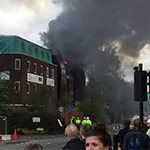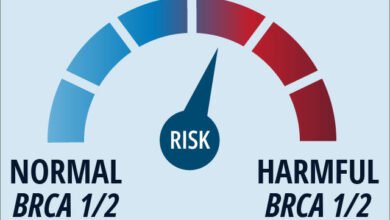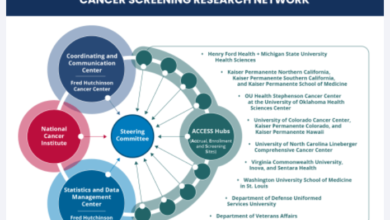Cancer Research UK – Science blog

The 26th of April, 2017, is a day I’ll never forget. It started off normal enough for me. As Cancer Research UK’s Head of Regional Media Relations, I scanned the morning’s news headlines over my coffee before getting ready for one of several office meetings I had lined up throughout the day.
And then, just after 10:50am, I got a phone call. It was one of our press officers in Manchester.
“You won’t believe this,” she gasped. “The Paterson building is on fire!”
I inhaled, sharply.
The facility in question was home to the Cancer Research UK Manchester Institute – world-class research laboratories adjoining the renowned Christie Hospital, established to pioneer new cancer treatments.
Home to over 400 scientists and support staff from around the globe, it was a beacon of hope for cancer patients and their families. ‘Was’, because by this point it was engulfed in flames.
Around 100 firefighters were scrambled as stunned researchers poured onto the pavement outside with alarms ringing in their ears. All they could do was look up and witness their work – in some cases projects that had been years in the making – being consumed by thick, acrid smoke.
Some were in tears, others simply stood with mouths wide open, barely able to take in what was before their eyes and fearing that some colleagues could still be inside.
Surgery at The Christie had to be halted and patients in the midst of chemotherapy were evacuated. It was like a scene from a disaster movie. Fortunately, everyone within the Paterson Building – owned by The University of Manchester – was moved to safety as water hoses faced up to the inferno.
Breaking news
As communications professionals, we prepare for what we term ‘crisis comms’ situations. Often in training, we’d remind one another of the need to anticipate the worst – “like, imagine if the building burns down”.
Within minutes, phones were ringing off the hook at Cancer Research UK’s head office, as well as at The Christie, as local media in Manchester and national outlets learned of the drama.
I snapped into gear, dispatching North West-based colleagues to the scene, frenziedly drafting a statement for journalists, fielding multiple interview requests from TV and radio stations, and trying desperately to get information from the emergency services. Pure adrenaline.
A major fear was that multimillion-pound research technology would be destroyed, either by the fire itself, or by water used to extinguish it.
This included an extensive collection of patient samples stored in huge freezers running at ultra-low temperatures to ensure the integrity of the samples is maintained – underpinning pioneering research. Thanks to the bravery of firefighters who entered the building to wrap the freezers in plastic sheeting, the samples were saved.
But much equipment was sadly damaged beyond repair – including two DNA sequencing machines used to analyse tumours and a Trodon ‘supercomputer’ capable of storing enormous amounts of DNA data. Vital chemicals and a library of drugs were lost.
Speaking amid the drama, Professor Richard Marais – the then director of the Cancer Research UK Manchester Institute, said: “This was our worst nightmare and it played out in front of our eyes. But we will rebuild. This Institute is just too important, not just to Manchester but for the whole world, as a centre of cancer discovery and treatment. The fight starts here.”
Aftermath
In the days following the fire, an outpouring of affection was shown towards the researchers who were now without a home. My team reached out to the Manchester Evening News who agreed to run an appeal to help rebuild the facility and, thanks to the extraordinary generosity of readers, more than £100,000 was raised within days.
The appeal received celebrity backing, including from Manchester United’s famous ‘Class of ‘92’ including brothers Gary and Phillip Neville, Paul Scholes and Nicky Butt.
And there were many touching moments, like when over 100 scientists posed for a photo holding up ‘thank you’ signs written in dozens of languages, underlining the Institute’s ability to attract the best and brightest scientists from around the world.
A fire service investigation eventually found that the blaze had been accidentally sparked by workers replacing copper cladding on the Paterson’s roof.
Meanwhile, researchers found temporary new homes with many welcomed into labs at the sprawling Alderley Park science campus in Cheshire.
The quest to find new treatments for people with cancer went on. It had to. Countless lives depend on it.
Rising from the ashes
Over the past few years, Cancer Research UK, The Christie and The University of Manchester have been working in partnership – securing funds to not only rebuild, but to come back bigger, better and more visionary than ever.
Through a combination of insurance payments, philanthropic giving, local charity support and investment from government agencies, a new £150m research centre has risen from the ashes.
Later this month, scientists and support staff will start to move into the dramatic, gleaming structure. At over 25,000 square metres, the building is twice the size of the previous facility, allowing experts to deliver discovery research and translate this into innovative clinical trials at scale.
Together, a multidisciplinary team of over 300 scientists and 400 clinicians and operational staff will deliver trials covering the full extent of the patient pathway, from prevention and novel treatments to living with and beyond cancer. The ambition is to double the number of people with cancer taking part in clinical trials in Manchester by 2030.
A central component of the building will be the new Cancer Research UK Manchester Institute Cancer Biomarker Centre. Biomarker testing is a way of looking for genes, proteins and other cancer-associated molecules that can provide information about a person’s cancer and how it is behaving.
Scientists can use biomarkers to do several things including detecting cancer early when there is more chance of cure; identifying an individual’s tumour type to predict what treatment might be best for them; and to anticipate when a tumour might become resistant to a particular treatment, so clinicians can change course.
Spread across three floors will be the Cancer Research UK Manchester Institute – one of four major institutes funded by the charity across the UK. Its aim is to understand the fundamental basis of cancer and apply that knowledge to developing new treatment strategies for many different forms of the disease.
And there’ll be several research teams from The University of Manchester’s Division of Cancer Sciences who’ll focus on different types of blood cancer as well as immunotherapy (a type of treatment that harnesses a patient’s own immune system to attack cancer cells).
The building will also be home to an experimental radiotherapy programme, plus the Academy of Surgical Oncology – a surgical research team, something very few UK cancer centres possess.
As Dr Caroline Wilkinson, Chief Operating Officer of the Cancer Research UK Manchester Institute, puts it: “This is the dawn of an exciting new era for cancer research in the North West. Out of the tragedy of the fire, this globally significant facility has emerged and it’s something that a great many people across Manchester and beyond can be proud of helping to achieve.
“Critically, the new building will allow clinicians and scientists to work alongside one another on a daily basis, facilitating the kind of interactions and collaborations that spark innovative ideas and lead to advances that bring hope to people with cancer and their families.”

Martin McGlown in head of regional media relations at Cancer Research UK
Source link
#Cancer #Research #Science #blog






